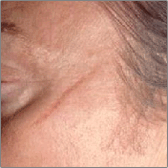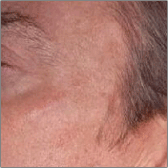

While no scar can be removed completely, plastic surgeons can often improve the appearance of a scar, making it less obvious through the injection or application of certain steroid medications or through surgical procedures known as scar revisions. There are different types of scars, which can influence the type of treatment you need. Your doctor or dermatologist should perform a close examination to determine whether the scar is a hypertrophic, keloid or atrophic scar.
Scar treatment procedures:
Laser resurfacing: A high frequency pulsating laser penetrates the skin of the scar and focuses its heat on the cellular layer. This heat destroys the cell layer and stops blood supply to the scar tissues which leads to the eventual reduction of the scar. Several treatments two to three months apart may be required to remove all or most of the scar.
Read more about Laser resurfacing.
Dermabrasion: By literally scraping the surface of the scar tissue, the raised scarring can be reduced and new cell growth promoted through dermabrasion. When the dermabrasion treatment is finished, the area will scab over and begin to heal to form a better scar with new skin. Difficult to treat keloid scars respond best to this treatment, and this procedure is not recommended for those with minor scarring, because essentially, it is trading one type of scar for another.
Read more about Dermabrasion.
Surgical excision: In some cases, a scar may need to be completely removed by surgical excision. In this case the old scar is replaced by a new scar which is more symmetrical or less noticeable.
Collagen injections: In the case of atrophic scars, which are sunken, collagen can be injected into the deeper layers of a scar tissue to help it become raised and lie flush with the rest of the skin's surface.
Recovery time: Depends on the treatment.